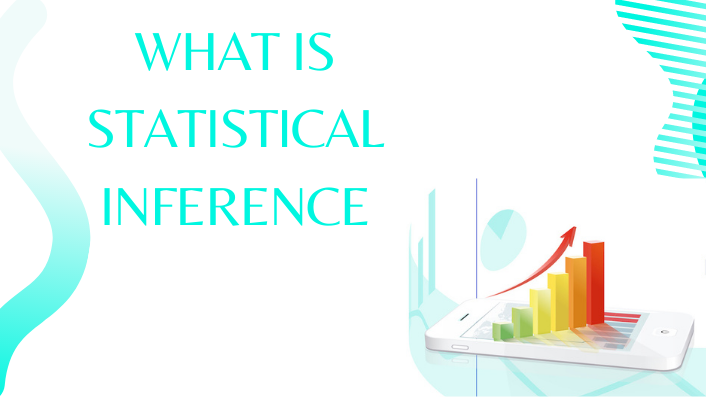The method of drawing conclusions about populations or scientific realities from evidence is known as statistical inference. Statistical modeling, data-oriented techniques, and specific use of designs and randomization in simulations are also examples of inference approaches. Besides that, there are various complications (missing evidence, observable and unobservable conflicting biases) and large hypotheses (Bayesian, probability, architecture-dependent, etc.) for conducting inference. A practitioner’s mind may get bogged down in a jumble of methods, theories, and complexity. The principles of inference are discussed in this article in a practical way for getting things done. Students will learn the broad directions of statistical inference after going through this article and will be able to use this understanding to make educated decisions while evaluating results and get statistics assignment help.
What is Statistics?
Statistics is the mathematics section that deals with collecting, explaining, interpreting, and inferring results from numerical evidence. Linear algebra, Differential and integral calculus, and probability theory are also used extensively in statistics’ mathematical theories. Mathematicians are especially interested in deciding how to draw accurate conclusions about large groups and specific hypotheses from the measurable features of small sample sizes that comprise either a small portion of the large population or a small number of examples of a general phenomenon.
Types of Statistics
Statistics are divided into two different subcategories:
- Descriptive Statistics
- Inferential Statistics
Descriptive Statistics
In statistics, descriptive statistics are used to explain data, while inferential statistics are used to make projections based on the data. The data are received from the survey in inferential statistics, which helps you to generalize the population. In specific, inference refers to making an informed guess about something. Making inferences about the population is what statistical inference entails. It utilizes a number of predictive research methods to draw a point about the population. In this post, we’ll go into in depth one of the forms of statistics known as inferential statistics. You can now discover the right concept of statistical inference, as well as its forms, solutions, and examples.
Inferential Statistics
Statistical inference is the method of interpreting data with random variance and drawing conclusions from it. Inferential statistics is another name for it. The predictive inference methods include hypothesis checking and confidence intervals. Statistical inference is a technique of using random samples to make assumptions about the parameters of the population. It assists in the estimation of the dependent and independent variables’ relation and gets statistics homework help. The aim of statistical inference is to measure the variance or difference from one study to the next. It helps them to have a likely set of values for anything in the population’s true values. The following elements are used to create statistical inferences:
- Sample Size
- Size of the perceived distinctions
- lack of consistency in the sample
Types of Statistical Inference
There are several kinds of statistical inferences that are widely utilized for progressing conclusions. They are:
- Pearson Correlation
- Multivariate regression
- ANOVA or T-test
- One sample hypothesis testing
- Confidence Interval
- Bi-variate regression
- Contingency table
- Chi-square statistics
Importance of Statistical Inference
To properly analyze the results, inferential statistics is needed. Proper data interpretation is required to analyze the study findings in order to draw a correct conclusion. It is mainly used to model the future with several findings in different areas. It assists us in concluding the results. The statistical inference has several uses in diverse areas, including:
- Machine Learning
- Artificial Intelligence
- Pharmaceutical Sector
- Financial Analysis
- Business Analysis
- Fraud Detection
- Share Market
Statistical Inference Solution
Statistical inference methods help you to make the most of statistical evidence from groups of people or tests. It interacts with all characters, including data acquisition, inquiry, and analysis, as well as data organization. People can gain information in a number of fields by using statistical inference solutions. The following are few facts about predictive inference solutions:
- The presumption that the analyzed sample is made up of observed data from a population category like Poisson or regular is a typical one.
- The predicted model’s parameter(s), such as the standard mean or binomial proportion, are calculated using a statistical inference method.
Statistical Inference Procedure
There is a particular procedure for inference. The procedure included in inferential statistics includes:
- Start with a theory
- Perform a research hypothesis
- Operationalize the variables
- Determine the population to which the study’s conclusions should be extended.
- Build a null hypothesis about this category of individuals.
- Continue the analysis after gathering a sample from the population.
- To be able to dismiss the null hypothesis, run statistical experiments to see whether the gathered sample properties are sufficiently different from what would be predicted under the null hypothesis.
Final Words
We have provided all the essential details regarding statistical inferences for your better understanding. Everything explained in a stepwise manner. Through this article, you have a broad direction of statistical inference and will be able to use this understanding to make educated decisions while evaluating results.


